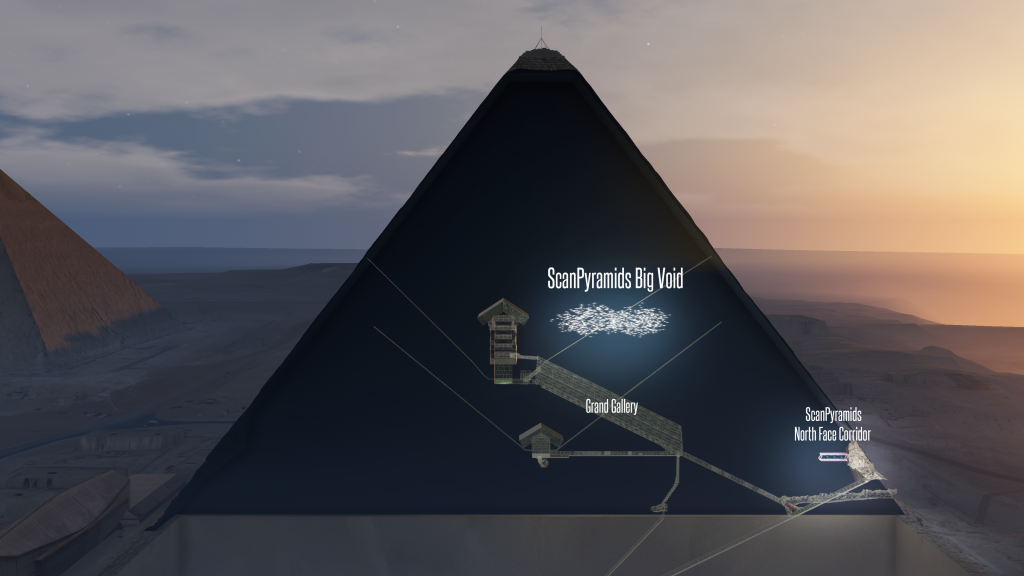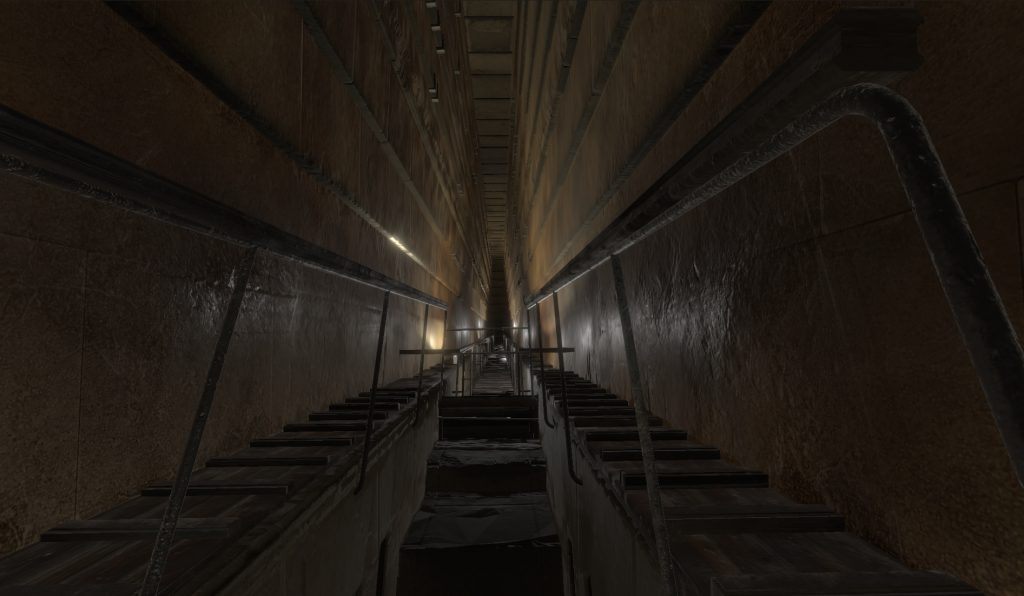Found: A Large ‘Void’ Inside the Great Pyramid of Giza
The tools of particle physics hint that there’s still more to discover about one of the world’s most famous monuments.

Inside the Great Pyramid of Giza, the largest of the ancient Egyptian pyramids, there are three main chambers, aligned on a north-south axis—a subterranean chamber, the Queen’s Chamber, and the King’s Chamber. Connecting the King and Queen’s Chambers is a Grand Gallery, which runs more than 150 feet. Above that, according to a new study published in Nature, is a “big void” that had never been detected before now.
Using technology that detects muons—high-energy cosmic particles that rain from space down to Earth—a team of scientists from Japan, France, and Egypt have found evidence that there is an empty space at least 98 feet long above the Grand Gallery. According to their report, three teams using three different muon-detecting technologies independently confirmed the existence of the void.
If what they found is accurate, this will be the “first major inner structure found in the Great Pyramid since the 19th century,” they write.

Scientists first started using the tools of particle physics to study ancient structures in the 1960s. In 1967, the experimental physicist Luis Alvarez gained access to the Pyramid of Khafre—the second largest of Giza’s ancient pyramids—and installed a muon detector in an underground room.
Alvarez and his colleagues were looking for chambers that might not have been found through other methods. Muons can pass through thick layers of stone, and by analyzing their relative positions, detectors can form a picture of any structure that the muons had passed through. In particular, this sort of analysis can show where there are large gaps in the stone, representing hidden rooms.
In that first experiment, the data from the detectors did not reveal any unknown secrets in Khafre’s pyramid. In the decades since, though, the technology for muon detection has improved immensely. Today’s instruments pick up less noise and are far more precise. Advances in computational power mean that optical analysis, simulations, and real-time data acquisition have all improved, too.

With these new tools, a team of scientists from Nagoya University, the HIP Institute in Paris, Cairo University, and France’s Alternative Energies and Atomic Energy Commission (CEA) began in 2015 to reexamine some of Egypt’s most famous sites. The team, which was made up of physicists and engineers, rather than Egyptologists, aimed to bring “a fresh eye and maybe a naive and candid eye” to the pyramids, HIP’s Mehdi Tayoubi told reporters in advance of the Nature paper’s release.
The project at the Pyramid of Khufu began with nuclear emulsion film installed by Nagoya scientists in the Queen’s Chamber. Once that test showed evidence of a void above the Grand Gallery, the team turned all its tools toward confirming the existence of that space. A second test was less conclusive, but a third instrument designed by the CEA, which uses gaseous detectors, showed evidence of two notable empty spaces in the pyramid—the Grand Gallery and a space just above it.

This newly detected large void is somewhere between about 160 and 230 feet from the ground, about a third to halfway up the giant structure. There’s no clear access to it, and so far it does not appear to have been hidden deliberately.
The authors of this new study have avoided speculating about the purpose of this void—whether it’s a structural element or a chamber full of undiscovered artifacts, or plays some other role in the monument’s history. As outsiders to the study of pyramids, the team could face some skepticism from Egyptologists. After all, saying you’ve found a hidden chamber in the most famous pyramid in the world is very large claim.

They hope, though, that scholars from other disciplines will jump at the chance to learn more. “This void needs more research,” Tayoubi said. “What is it? We need the help of other people.” All they can say for sure right now is that they are sure there is a space in the pyramid not full of stone, and that it is definitely rather large.
















Follow us on Twitter to get the latest on the world's hidden wonders.
Like us on Facebook to get the latest on the world's hidden wonders.
Follow us on Twitter Like us on Facebook